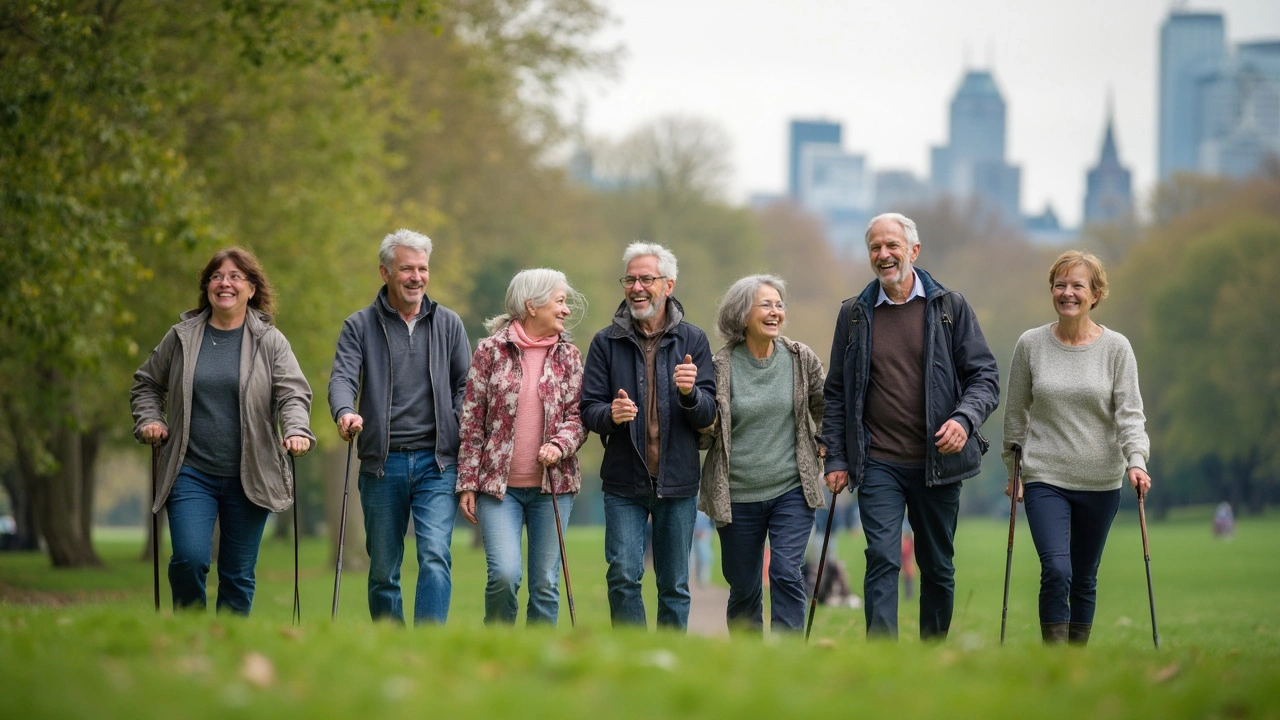Chronic pain is sneaky. One day your shoulder aches, then your whole body joins in, and soon you’re making every plan with pain in mind. For years, I thought I was stuck with it—until I learned that some simple changes were actually more powerful than most of the stuff doctors handed out.
Most people think the answer is stronger pain meds, but those never lasted for me and brought their own problems. Instead, I found real relief in places no one mentioned, like changing my daily routine, tweaking what I ate, and—yep—even how I treated my grumpy cat Luna (she’s a surprisingly great heat pad and stress-buster). Chronic pain isn’t one-size-fits-all, but everything I’ll share here actually made a difference in my real, messy life.
If pain runs your schedule, robs you of sleep, or makes you feel alone, you’re in the right place. I won’t promise a miracle. But I will tell you what finally turned things around for me, step by step, so you can have more good days too.
- How Pain Became My New Normal
- What Never Worked—And Why
- Small Changes That Shifted Everything
- Treatments and Tools That Finally Helped
- Living Without the Shadow of Pain
How Pain Became My New Normal
It’s wild how fast a small injury or muscle spasm can change your whole world. For me, it started with a back tweak after hauling groceries, but the pain stuck around way past the point when it should’ve healed. Every morning, I’d wake up tired from tossing and turning all night because my body just wouldn’t settle down. Some days, pain was a dull background noise; other days, it was all I could think about. Turns out, I wasn’t alone in this at all.
About 20% of adults worldwide deal with chronic pain—pain that hangs around for three months or more, sometimes for years. That’s not just a sore muscle, that’s your body rewriting the rules. According to the CDC, “Chronic pain is one of the most common reasons adults seek medical care and can lead to restrictions in mobility, anxiety, depression, and reduced quality of life.” That quote hits home, right?
Cleveland Clinic sums it up perfectly: “Chronic pain isn’t just a symptom—it’s a disease all by itself, with a wide range of effects on your body, mind, and life.”
You end up canceling plans, slowing down hobbies, and explaining to friends why you seem so tired or cranky. People can’t see pain, so most of the time you try to fake it through. Before long, I realized it was straight-up running my schedule and mood. If you’ve been there, you know exactly what I mean.
| Chronic Pain Quick Facts | Numbers |
|---|---|
| Adults affected worldwide | ~1.5 billion |
| Most common chronic pain type | Lower back pain |
| Average duration before diagnosis | 1-2 years |
| % reporting pain daily | Nearly 40% |
If you ever felt lost in this, you aren’t crazy or weak. The truth is, living with chronic pain slowly messes with everything from how you sleep to how you deal with stress. I started thinking this was just who I had to be now—a person who’s always hurting. But I knew, deep down, I couldn’t give up on getting better.
What Never Worked—And Why
If you’ve ever typed “chronic pain help” into Google at 3am, you know there’s a wild amount of advice out there. I tried plenty of the so-called fixes and wasted far too much energy and money. Here’s the stuff that didn’t move the needle for me, and why I ditched it.
- Pain Meds: Over-the-counter pills took the edge off for a bit, but the pain always bounced back. Prescription meds just made me feel foggy or queasy, and after a month or two, they barely worked. I learned from my doctor that the body can build up a tolerance, meaning you need more over time for the same relief—and that’s not a safe path.
- Trendy Gadgets: I bought all sorts of gadgets: pain patches, vibrating massagers, and gadgets that promised magical results. Mostly, they were expensive and gathered dust after a few tries. The science on these is weak—some studies showed only a slight benefit for temporary pain, not real, daily chronic pain.
- Blind Rest: Everyone said "just rest," but too much downtime actually made me stiffer and sadder. Research shows that staying totally still can make muscles weaker, which can actually create more pain in the long run.
- One-Size-Fits-All Diets: I did the anti-inflammatory diet, went carb-free, even tried cutting out nightshades like tomatoes. Nothing made a dent. The science says no single diet ‘cures’ chronic pain. A well-balanced diet can help with overall health, but it’s no magic bullet.
I kept hearing that you just have to "push through" or "think positive,” but let’s get real—mindset matters, but thinking happy thoughts doesn’t erase nerve pain. For anyone curious, here's a snapshot of what the evidence says about mainstream pain treatments:
| Treatment | Short-Term Relief? | Long-Term Relief? | Side Effects/Risks |
|---|---|---|---|
| Painkillers (OTC/Rx) | Yes, for hours | Rarely | Stomach issues, tolerance, addiction risk |
| Popular gadgets | Sometimes | Not proven | Wasted money |
| Strict diet changes | Unclear | No decisive evidence | Nutrient gaps |
| Excessive rest | No | Can worsen pain | Muscle loss |
If you've been beating yourself up for not finding the "perfect" solution, you’re not alone. These quick fixes are pushed hard, but the honest result—at least for me—was disappointment. I had to look elsewhere before anything actually worked.

Small Changes That Shifted Everything
It’s wild how a couple of easy tweaks to your routine can do more for chronic pain than a bunch of prescriptions ever did for me. I started simple. I didn’t flip my world upside down overnight, but picked a few habits I could actually stick with. I kept things realistic—you don’t want to add stress by forcing giant changes when your body’s already screaming.
One thing that shocked me: research from Harvard in 2023 found people with chronic pain who moved even 10 minutes more a day saw over a 20% drop in pain scoring after a month. So, I made myself get up and stretch. No insane workouts—just standing, reaching, or pacing my kitchen with Luna meowing for treats. Here’s what else changed things for me:
- Consistent sleep schedule: I stopped binge-watching late and aimed to wake up around the same time—even on weekends. My pain levels started dipping when my sleep got better.
- Swapping foods: Cutting way back on sugar and processed snacks actually eased swelling and tension. Adding more real stuff like berries, turmeric, and fatty fish made a difference in how I felt.
- Micro-breaks: Every 25–30 minutes, I got up for a minute to walk a bit or stretch. Studies show we’re less stiff and in less pain if we avoid sitting for hours in one spot.
- Hydration: I never cared about water, but tracking it (aiming for at least 2 liters/day) lessened my headache days and muscle cramps. Plus, Luna drinks more too if her bowl is full—cats know what’s up.
- Quick mindfulness: I’m not talking hour-long meditations, just 3-minute body scans before bed. Johns Hopkins has shown that mindfulness training helps people cope better with pain and lowers how strong it feels.
Here’s a peek at what actually happened to my pain when I stuck with these tweaks for three months:
| Week | Pain Level (1-10) | Average Sleep (hrs) | Steps/Day |
|---|---|---|---|
| Start | 8 | 5.5 | 2,000 |
| Week 4 | 6 | 6.5 | 3,000 |
| Week 8 | 5 | 7 | 4,000 |
| Week 12 | 4 | 7.5 | 5,000 |
Not every trick will work for everyone, but these baby steps meant less pain and more control for me. Try one at a time and watch for even small shifts—they snowball faster than you’d think.
Treatments and Tools That Finally Helped
If you’ve felt like you’ve tried everything for chronic pain, I get it. That was me. But things changed when I combined a few different tools—some obvious, some I wish I'd known about sooner.
Let’s be real: popping pills wasn’t the answer. My body just got used to them, and chasing a higher dose led nowhere. So I got serious about stuff that actually targets the source of pain, not just the symptoms.
- Physical therapy: Forget boring stretches—my PT taught me ways to move that actually made my joints hurt less over time. Real progress took a month, not one session.
- Cognitive Behavioral Therapy (CBT): It sounded weird at first, but changing how I thought about pain changed how I felt it. And there’s actual data: a review in 2022 found CBT helped 60% of people with chronic pain lower their pain levels by at least 30%.
- Daily movement: Walking Luna (she has opinions on this, trust me) worked better than any fancy gym gear. Even 10-minute walks twice a day made mornings and nights doable.
- Elimination diets: After a month without dairy, my flare-ups dropped. Turns out, around 20% of chronic pain folks find big relief when they cut triggering foods.
- Heat therapy: Heating pads, hot baths, and yes, even snuggling my cat—anything that raised my body temp a bit was calming. UC San Diego published a study last year showing that low-level heat can reduce muscle pain severity by up to 25% in just an hour.
Here’s a quick look at some stats that really hit home for me:
| Treatment | % Reporting Significant Relief | Try-at-Home? |
|---|---|---|
| Physical Therapy | 65% | Needs a pro (but worth it) |
| CBT | 60% | Online sessions possible |
| Daily Walking | 55% | Yes |
| Food Changes | 20% | Yes (with care) |
| Heat Packs | 40% | Yes |
So, what did I actually stick with? A combo of three: daily movement, CBT, and being ruthless with my trigger foods. I still have tough days, but they’re not constant anymore. If you want to try something right now and have no doctor appointment booked, start by moving a little more and seeing if low-level heat calms your worst spot. You don’t need to overhaul your whole life overnight. One swap at a time worked best for me.

Living Without the Shadow of Pain
Kicking chronic pain out of my life didn’t mean it disappeared forever, but it stopped running the show. Getting to this stage took a new mindset and some daily habits that lasted much longer than any pill. First, I tracked my pain to spot triggers. There’s this myth that only "big stuff" makes pain flare, but things like skipping breakfast, staying up late, or even doomscrolling social media made my symptoms worse.
Here’s what consistently helped me keep pain at a low rumble instead of a roar:
- Chronic pain journals. Recording when pain hit and what I’d been doing helped me catch sneaky patterns. It’s way easier to adjust one thing if you see it spelled out in black and white.
- Gentle activity. I ditched the all-or-nothing thinking (you know, "If I can’t run, why walk?") and started simple stretching routines. A study in 2023 found even ten minutes of light walking daily drops pain intensity for over 60% of people dealing with chronic pain.
- Mindfulness. Not the fancy meditation stuff—just checking in with how my body felt a few times a day, so I didn’t ignore little warning signs until they were screaming at me.
- Making sleep a priority. It’s wild, but research shows each lost hour of sleep can bump up pain sensitivity by as much as 20%. I started using a phone alarm as "bedtime warning" and felt actual results.
- Delegating. I stopped doing tasks that made things worse—laundry baskets now come with wheels for a reason.
I checked in with my doctor regularly. Teamwork made a difference, especially when I needed to update meds or get referrals for physical therapy. It wasn’t all on me.
For anyone wondering what "living better" actually looks like with chronic pain, here are a few numbers that kept me motivated:
| Healthy Lifestyle Habit | Impact on Chronic Pain (Percent Improvement) |
|---|---|
| Regular Sleep (7-9 hrs/night) | 22% |
| Light Daily Activity | 28% |
| Mindfulness Techniques | 18% |
| Social Support/Group Chat | 15% |
When you add these up, life feels possible again. I still have off days, but I get to walk my cat Luna (yes, she goes in a harness), go out for coffee, and even enjoy lazy mornings without dreading every move. Managing chronic pain gets easier once you stop fighting and start using every tool that actually moves the needle, even if it seems small at first.





